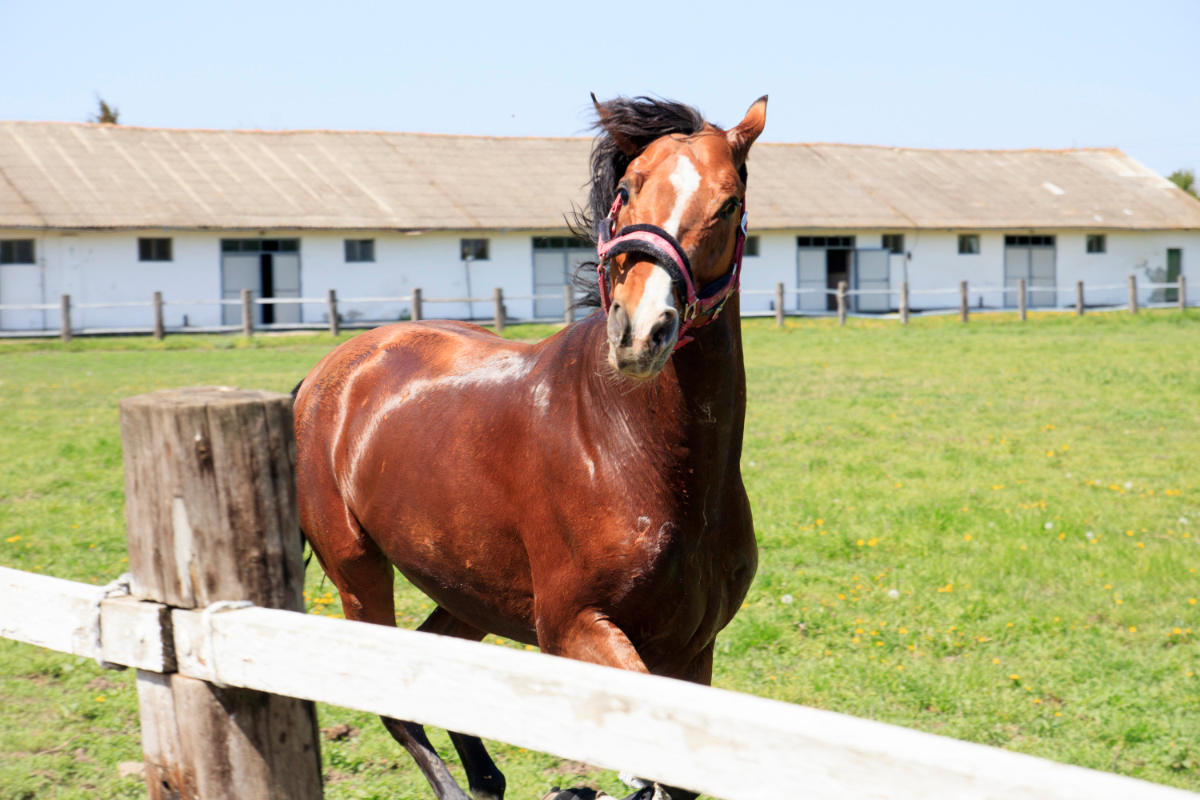Jegălia Horse farm
Category OtherLOCATION
Strada PRINCIPALĂ, PERIŞORU
917195 CĂLĂRAŞI
DESCRIPTION
Located at 110th km on Autostrada Soarelui, Jegălia horse farm currently raises 250 Romanian sport breed horses. The farm is located near the Perişoru commune. The only Perişoru commune site included in the list of historical monuments in the Călăraşi County is the Pribegeanu Mansion located 4 km west of the Marculesti-Gara village, north of DN3B, next to the silo. The mansion is classified as an architectural monument and dates back to 1902.[1]
At the Jegălia horse farm tourists find a place where they can spend their leisure time having fun riding and relaxing.
The farm is intended for the growth and improvement of the genetic material for the Romanian sport horse, the Trăpaş and Semigreu breed, the promotion of racehorses through equestrian sport and the raising of equines from stallions to studs.
The breeds are:
The Romanian Race Horse, whose training started at horse farm Sâmbata de Jos. Horses of this breed are intended for obstacle competitions.
The Romanian Trotter is part of the group of trotter racers, who share the skill for the speed trap. They have proved themselves in races in the last decades, with the participation of mainly the American trotter (85%), the Orlov Trotter (10%), the French trotter (5%) and the Russian trotter (5%).[2]
In the process of breeding, a blood infusion with the Nonius and Furioso - North Star varieties has also been used.
The Romanian Semigrel is an intermediate traction racer. It was formed by crossing the horses from Ardenez, Lipitan, Trăpas with local mares, being a horse adapted to the conditions of the Romanian Plain.
The material base consists of: 8 stables, 1 covered manege, 1 training track, base for hurdle competitions, a training base, administrative headquarters, guest house and farmland.
The horse farm Jelegia offers: breeding stallions for public mount stations. specialized advice on breeding in horses for the purpose of improving private sector breeds, equestrian training, dressage and training, equestrian sporting shows and competitions, recreation and equestrian tourism.[3]
HISTORY
Domestication of the horse most likely took place in central Asia prior to 3500 BC. Two major sources of information are used to determine where and when the horse was first domesticated and how the domesticated horse spread around the world. The first source is based on palaeological and archaeological discoveries; the second source is a comparison of DNA obtained from modern horses to that from bones and teeth of ancient horse remains.
The earliest archaeological evidence for the domestication of the horse comes from sites in Ukraine and Kazakhstan, dating to approximately 3500–4000 BC. By 3000 BC, the horse was completely domesticated and by 2000 BC there was a sharp increase in the number of horse bones found in human settlements in northwestern Europe, indicating the spread of domesticated horses throughout the continent.[4]
In 1921, the Jegalia horse farm was established as a repository and breeding point for Pure Blood Arab and Pure English Blood breeds for the needs of the army. In 1948 the farm became the property of the Ministry of Agriculture. Five years later, in 1953 it was disbanded and moved to Slobozia. In 1959 the location was re-established as a stallion deposit.
In 1970 it received horses for the Sambata de Jos sports horse farm.
At the beginning of the millennium, 2002, the farm was transferred to the National Forest Administration as a section within the structure of the Forestry Directorate of Calarasi.
In November 2011 it took over the breeding nucleus of the Trapase breed from Dor Marunt.[5]
Starting with 2012, the entire trotter population from Rușeșu was moved to the Jegalia horse farm, forming a single nucleus that brings together the two branches of trotters, the ones raised at Rușețu and those grown at Dor Mărunt.[6]
SITE SIGNIFICANCE
The farm is intended for the growth and improvement of the genetic material for the Romanian sport horse.
OTHER INFORMATION
In 1921, the Jegalia horse farm was established as a repository and breeding point for Pure Blood Arab and Pure English Blood breeds for the needs of the army.
CLASSIFICATION
Natural-Economic Object
[1] Comuna Perișoru, Călărași
https://ro.wikipedia.org/wiki/Comuna_Peri%C8%99oru,_C%C4%83l%C4%83ra%C8%99i
[2] Herghelia Jegalia
http://www.rosilva.ro/articole/herghelia_jegalia__p_144.htm
[3] Herghelia Jegălia
http://www.hergheliidestat.ro/herghelia-jeg-lia.html
[4] https://en.wikipedia.org/wiki/Horse
[5] Herghelia Jegălia
http://www.hergheliidestat.ro/herghelia-jeg-lia.html
[6] Herghelia Rușețu, o pagină nescrisă de istorie
http://www.turismistoric.ro/herghelia-rusetu-o-pagina-nescrisa-de-istorie/




